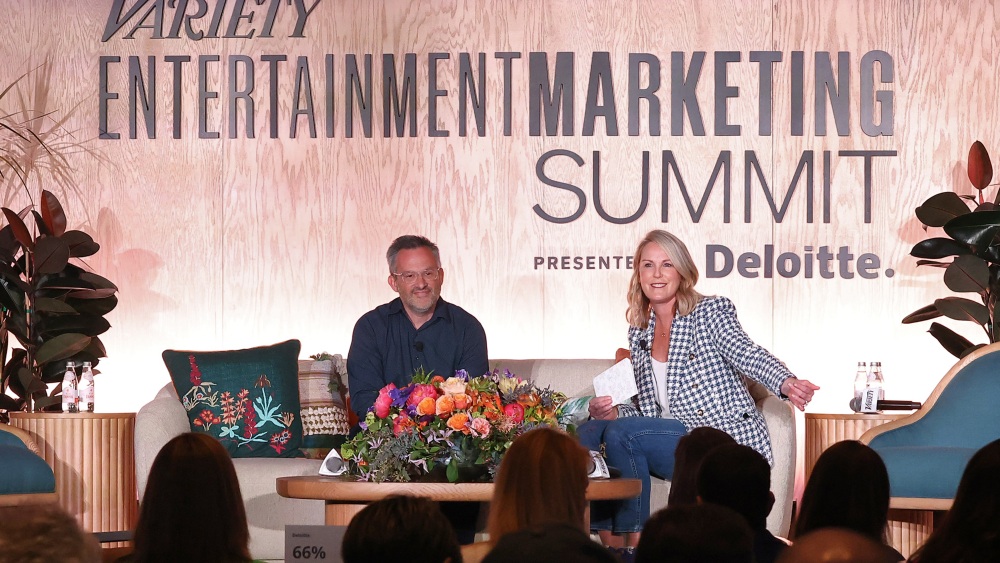
Jana Arbanas, Deloitte’s Vice Chair & U.S. Telecom, Media & Entertainment Sector Leader, sat down with President & Chief Media Analyst of Variety’s Intelligence Platform, Andrew Wallenstein, at Variety’s Entertainment Marketing Summit presented by Deloitte to help elucidate Deloitte’s latest digital media trends report on media consumption across generations.
The survey was the 17th of its kind from Deloitte and analyzed data from 2,020 consumers. In the report, generations were defined as those born within these timelines: Gen Z (1997-2009), millennial (1983-1996), Gen X (1966-1982), boomers (1947-1965) and matures (1946 and earlier).
Arbanas touched on four key themes: the notion of an interconnected social tapestry; consumer frustrations and economic pressure; gaming’s unique interactive, immersive experience; power of user-generated content.
“Screen time used to be this dirty word,” Arbanas said. “Now, it is an important conversation about community and connectivity that is at the center of most consumers’ lives. Ten years ago, only a quarter of the U.S. saw themselves interacting with media digitally, but 48% of Gen Z and millennials say they spend more time interacting with others on social media than in the physical world, according to Deloitte’s survey.
Arbanas believes companies must lean into fandoms and digital suits in response.
“There’s real power in convergence,” she said, the same way Spotify took advantage of the Kate Bush revival thanks to “Stranger Things” and Netflix. It’s all about discovery and engagement, Arbanas explained.
Though, the issue arises of how to attract consumers and keep them around. Monitoring churn rate was a key part of Deloitte’s survey and they found that, on average, consumers will have only four streaming subscriptions at one time, so as they pick up one, they drop another. This “churn and return” rate was highest amongst millennials, though they also invested the most into streaming, spending an average of $54 a month as they sought out platforms that best fit their consumption.
Arbanas attributed higher millennial spending on streaming to the fact that Gen Z prefers user-generated content. “It’s snackable, free, fresh and new content,” she said, giving it the ability to fill the gaps of streaming services. Because of this, Arbanas stated that UGC should be seen as an attention competitor for entertainment media.
Similarly, Deloitte’s survey found younger generations devoted lots of their time to gaming –and even their self-worth. Success in a video game boosted self-confidence by 73% in the Gen Z and millennials demographic. “They’re the main character, they have a hand in how it plays out,” explained Arbanas. She believes that it’s vital for entertainment media to extend their content into the gaming world in order to increase consumption.
In terms of branding and advertising, the rise of influencers across social media has brought forth a whole new way of selling products to consumers directly through their screens. Deloitte found that 70% of millennials and Gen Z use UGC to discover new products and services. “It’s almost like asking a friend for advice.”
As UGC becomes the more palatable form of advertising for younger generations, Arbanas feels it’s important for companies not to write off the power of creators, even smaller ones, who can grab the attention of niche communities. “Tolerance for traditional ads continues to go down,” she said. Gen Z and the even younger Gen Alpha will continue to push the envelope for tech expectations. “We need to get over some of our reservations for how things work.”
Watch the full conversation above.













